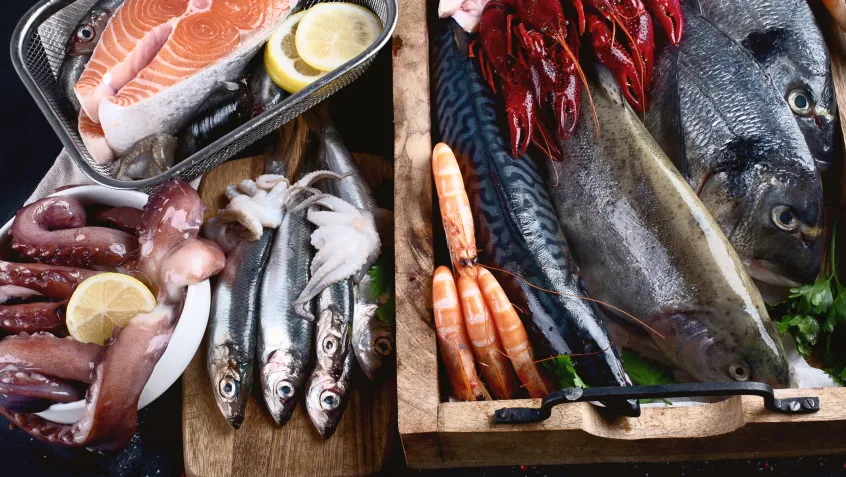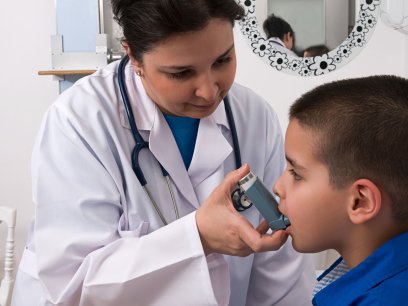
You are what you eat—in more ways than one.
Whether you love to fish or you love to eat fish, seafood plays an important role in American life. You might make your living in the fishing industry or indulge in local seafood delicacies—such as crabs from the Chesapeake Bay, shrimp from the Gulf of Mexico, or salmon from the Pacific region. But your love for the sea—and the creatures in it—can come with some health concerns.
Although the US Food and Drug Administration recommends eating up to 12 ounces of seafood weekly, consuming some fish and shellfish can pose some health risks. How? Seafood may accumulate illness-causing microorganisms and contaminants, including elevated levels of mercury.
While mercury does occur naturally in the environment thanks to volcanic eruptions and ocean emissions, industrial sources now factor into the issue. Coal-fired power plants, waste incinerators, and some factories and mining operations (particularly gold mining) emit mercury to such an extent that it is now a global problem.
Mercury emitted into the air can fall to the ground in raindrops or in dust, and settle into bodies of water or onto land, where it can be washed into water. It then accumulates on the floor of water bodies. Bacteria can then convert it to a toxic form called methylmercury, which makes its way up the food chain as bottom dwelling fish that consume it are consumed by larger fish. By the time methylmercury makes its way to the top of the food chain, the big guys—like tilefish, shark, swordfish, and king mackerel—have accumulated large amounts of it.
Mercury in your seafood? That can’t be good.
It’s not. Methylmercury and other forms of mercury are poisonous to nerve tissue. Symptoms of methylmercury poisoning may include vision loss, and impairment of movement, speech, hearing, and walking. As a result, the US Food and Drug Administration has well-established guidelines on how to limit methylmercury exposure while eating seafood, particularly in women and young children.
So, how do you know what’s safe to eat? Check out the US EPA’s National Listing of Fish Advisories, as well as the seafood consumption advisories from all 50 states and some US territories and tribes.
Sources:
- Environmental Defense Fund. 2016. “Mercury in Seafood.” Accessed May 18. http://seafood.edf.org/mercury-seafood.
- Flavors of the USA. 2016. “Fresh Catch: Where to Find the Best Seafood in the USA.” Accessed May 18. http://flavors.visittheusa.com/fresh-catch-where-find-best-seafood-usa.
- NPR. 2007. “Fish FAQ: What You Need to Know About Mercury.” Accessed May 18, 2016. http://www.npr.org/templates/story/story.php?storyId=6283905.
- US Department of Agriculture and US Department of Health and Human Services. 2010. “Dietary Guidelines for Americans, 2010.” 7th Edition. doi:10.1016/S0300-7073(05)71075-6.
- United Nations Enviornment Programme. 2016. “Mercury Control from Coal Combustion.” Accessed May 1. http://www.unep.org/chemicalsandwaste/Metals/GlobalMercuryPartnership/Coalcombustion/tabid/3530/Default.aspx.
- US EPA. 2015. “Basic Information about Mercury.” Accessed May 1, 2016. https://www.epa.gov/mercury/basic-information-about-mercury.
- US EPA. 2016. “Fish and Shellfish Advisories and Safe Eating Guidelines.” Accessed May 1. https://www.epa.gov/choose-fish-and-shellfish-wisely/fish-and-shellfish-advisories-and-safe-eating-guidelines.
- US Food and Drug Administration. 2004. “What You Need to Know About Mercury in Fish and Shellfish (Brochure).” Accessed May 1, 2016. http://www.fda.gov/food/resourcesforyou/consumers/ucm110591.htm.


